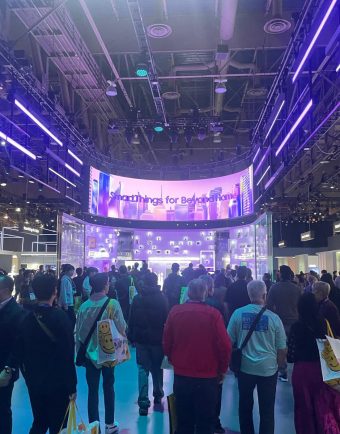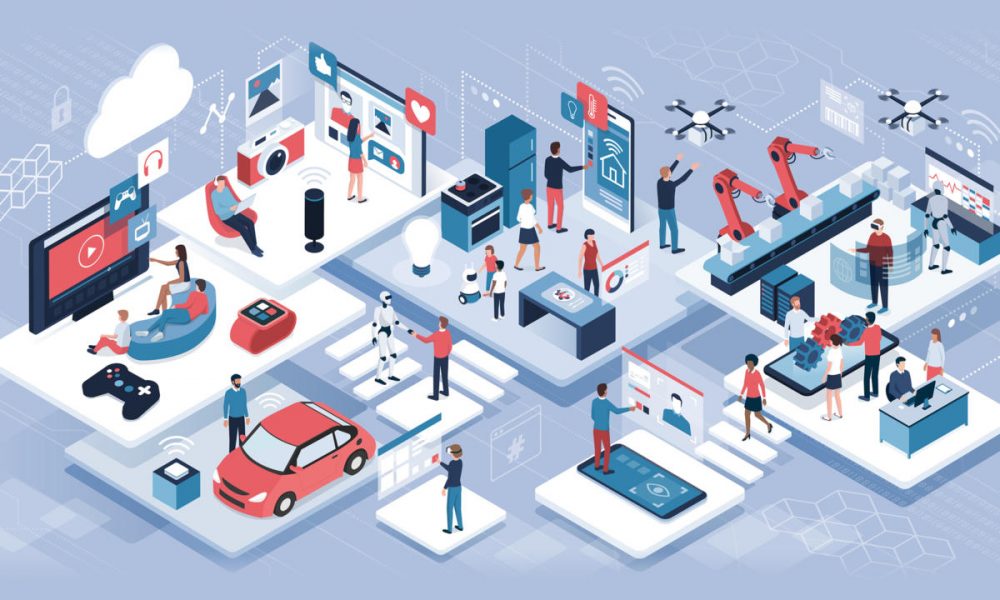

Přejít k obsahu | Přejít k hlavnímu menu | Přejít k vyhledávání

A bloated bubble or everyday reality? This is one of the first things that usually come to mind when you mention the three-letter abbreviation IoT, which represents the world of the Internet of Things.
So how are we really doing at the beginning of 2021 – in terms of specific numbers, statistics and facts?
The Internet of Things is already, first and foremost, a huge global business today. Its turnover reaches $ 212 billion worldwide. 20.4 billion devices are connected worldwide. If nothing extraordinary happens, by the end of 2025, their number should more than triple. More than 75 million facilities are expected to be used worldwide.
Probably the most iconic symbol of the whole boom in the Internet of Things is self-driving cars. They are no longer a sci-fi fairy tale, but a thing already produced and tested. In the coming years (after the approval of the relevant legislation) they should also appear on the roads. The boldest forecasts claim that as early as 2030, up to 20 percent of cars on the market could be self-driving. In all probability, this will not happen. But it’s not the fault of the manufacturers, who today stand on brands and believe that self-driving cars will shed light on the way out of today’s automotive crisis. But precisely because of the inflexibility of national governments, which so far view the whole field with distrust. We all know well how unproductive the whole “official red tape” can be.
Smart City is paper shuffling here
“In the last seven years, I have attended an incredible number of meetings on the topic of smart city and the development of the Internet of Things. Nevertheless, today our topic is full of shuffled papers, which is not the fault of manufacturers or technology, but of politicians and officials who look at everything new with distrust. Instead of solving how to put these innovations into practice as quickly as possible, they think about why this should not happen, “says Jiří Konečný, who has won the Smart City Personality or Visionary of the Year award in recent years. However, he has decided to back off from activities in the Czech Republic. “In the Middle East, India, Vietnam, but now also in the Baltics or the Balkans, I see much more flexibility and drive. I’m a little afraid that one day we will regret that we approached the whole process of digitization and automation rather lazily, “he adds.
At the same time, the most fundamental impulse for putting the elements of the Internet of Things into practice is saving. Data from a survey of 1,600 companies from a variety of countries show that for 54% of them, cost savings are the primary reasons to use IoT. Only 35% of them implement them to increase turnover and an even smaller percentage (24%) to improve the company’s security. And one interesting thing – in 2019, at least one element from the Internet of Things was used by 82% of manufacturing companies. This really is not a negligible number.
IoT and AI will drive the economy
A huge topic for the future is also the so-called “home IoT market” – i.e. security systems, automatic lighting, climate control and entertainment. According to STATISTA, this market should reach the value of 53 billion US dollars within two years. The example of voice assistants testifies to the incredibly fast pace of the whole field. The most famous, Alexa or Siri, are really advancing today. One example for all: while in June 2016, Alexa only had 1,000 instructions; today it handles 90,000 different instructions
Finally, one more remarkable statistic, in 2025 the 600 most advanced “smart cities” should take care of 60% of the world’s gross domestic product. A total of $ 2 trillion. At the same time, the most fundamental driving engines should be the IoT fields in cooperation with artificial intelligence (AI).
So – reality or bubble? The first is much closer to the truth, although unfortunately many people still see the second. Many of them sit in important positions where decisions are made about the direction of industry, the state or science.